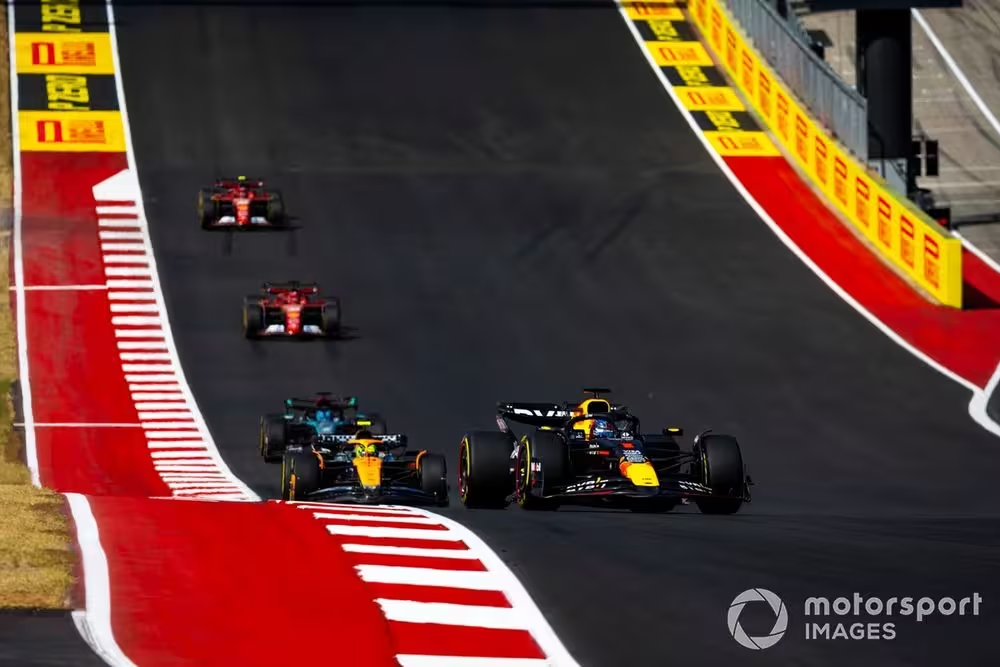Off the back of an eventful sprint race, Formula 1 teams are braced for high tyre-wear race at the United States Grand Prix.
Given Austin’s varied and demanding high-downforce layout, the new track surface and high temperatures, tyre wear and graining concerns could open up strategy variations of the expected two-stopper using medium and hard tyres.
Two-stop looks king
Pirelli doesn’t consider the soft tyre particularly usable, other than for late fastest lap glory runs, with a two-stopper on medium and hard tyres the clear winner in its simulations. The medium tyre is around 1.2s quicker than the hard compound, making it by far the best tyre for the 56-lap race.
“The medium compound will be the protagonist of the race because teams have one set of hards and a lot of sets of mediums,” Pirelli’s head of motorsport Mario Isola explained.
“We know that the soft is not really suitable for the race, unless you want to try a fast lap. The tyre wear is higher than expected. That is also the reason why the race will be two-stop. We do not predict any one-stop strategy, because it’s really marginal in terms of wear.
Max Verstappen, Red Bull Racing RB20, Lando Norris, McLaren MCL38, George Russell, Mercedes F1 W15
Photo by: Sam Bloxham / Motorsport Images
“Medium, hard and medium again is the quickest on paper. If you want to do something different, you can do medium, medium and hard at the end. Any other combination, you could start on the soft with a very short stint at the beginning, but to be honest I’m not sure it’s going to be popular.”
Teams to exploit powerful pitstop undercut
Another reason why a soft-tyre start isn’t as tempting is because tyre warm-up on the mediums proved rapid in Saturday’s 19-lap sprint. After the Turn 1 hairpin, the demanding Esses ensure that Pirelli’s medium rubber is up to speed fairly quickly.
Starting on hard tyres would put drivers at too great a risk of losing track position, but it might still be an option for those starting out of position at the back, like Mercedes’ Lewis Hamilton and RB driver Liam Lawson, in a bid to do something different.
But with most teams likely gravitating towards a very similar strategy, the effect of the undercut will be very powerful. Pitstops, in-laps and out-laps are set to be particularly crucial at COTA, although drivers can also pay a price for overstressing the tyres early in a stint, a trademark of this generation of Pirelli rubber.
“I believe that…
Click Here to Read the Full Original Article at Autosport.com – Formula 1 – Stories…

